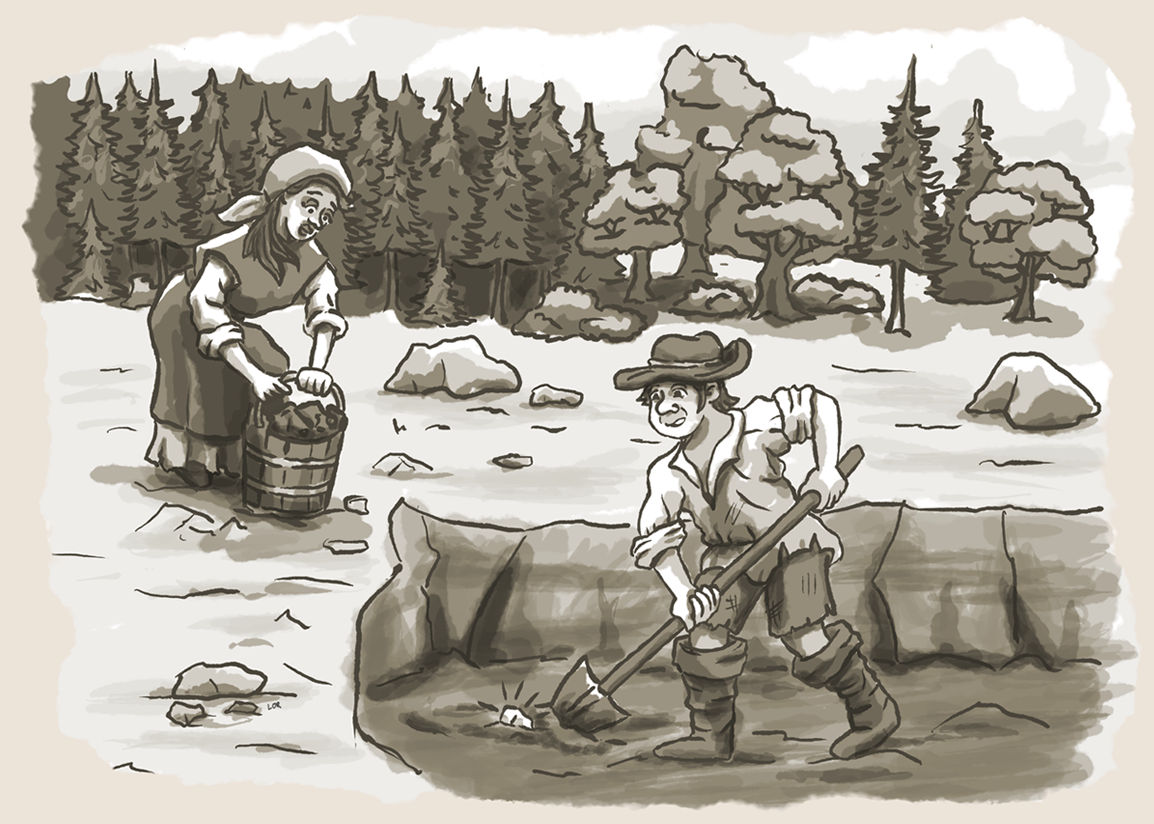1. The origin of the mining town of “Brand”

With the revival of mining to the south of Freiberg, a haphazardly laid-out miners‘ settlement called “ufm Brande” was established after 1500 on the ridge in the northern Erbisdorf area. This place name “ufm Brande” probably goes back to a field name, although it could also refer to a charcoal pile. “Brand” was not referred to as a small town until 1590.
A charcoal burner named Klaus and his daughter Margaretha once lived in the dense primeval forest that had formerly covered our region. A young man from the Thuringian countryside served him as a hired hand. He fell in love with the pretty Margaretha and would have liked to marry her.
But Margaretha‘s heart was set on a young miner from Freiberg who had fallen into a wolf pit in the forest and had been nursed by the charcoal burner‘s family.
The two became engaged and were married only a short time later. The charcoal burner‘s hired hand was very angry about this. He devised an evil plan of revenge. The night after the wedding, the Thuringian set a big fire. Soon the charcoal burner‘s hut was in flames, and only with great difficulty did the newlyweds manage to escape from the sea of flames. The charcoal burner Klaus, however, lost his life.
Only a rainstorm put an end to the flames. The young couple first fled to Freiberg.
A few days later they returned to the site of the fire. “We want to go up to the fire (to “the brand”),” they said. There was nothing left of the old dwellings.
They decided to build new houses and when they dug a trench for the new foundation walls, they found a level of red-gold ore.
The young miner used it to found the first pit on the “Brand ” and called it the “Blessing Prince” ( “Segenfürst ”). Soon the reputation of the area‘s silver wealth attracted more miners, so that in 1515 all the mountain huts, forest and mining houses up on the “Brand ” were united into one community.
A charcoal burner named Klaus and his daughter Margaretha once lived in the dense primeval forest that had formerly covered our region. A young man from the Thuringian countryside served him as a hired hand. He fell in love with the pretty Margaretha and would have liked to marry her.
But Margaretha‘s heart was set on a young miner from Freiberg who had fallen into a wolf pit in the forest and had been nursed by the charcoal burner‘s family.
The two became engaged and were married only a short time later. The charcoal burner‘s hired hand was very angry about this. He devised an evil plan of revenge. The night after the wedding, the Thuringian set a big fire. Soon the charcoal burner‘s hut was in flames, and only with great difficulty did the newlyweds manage to escape from the sea of flames. The charcoal burner Klaus, however, lost his life.
Only a rainstorm put an end to the flames. The young couple first fled to Freiberg.
A few days later they returned to the site of the fire. “We want to go up to the fire (to “the brand”),” they said. There was nothing left of the old dwellings.
They decided to build new houses and when they dug a trench for the new foundation walls, they found a level of red-gold ore.
The young miner used it to found the first pit on the “Brand ” and called it the “Blessing Prince” ( “Segenfürst ”). Soon the reputation of the area‘s silver wealth attracted more miners, so that in 1515 all the mountain huts, forest and mining houses up on the “Brand ” were united into one community.